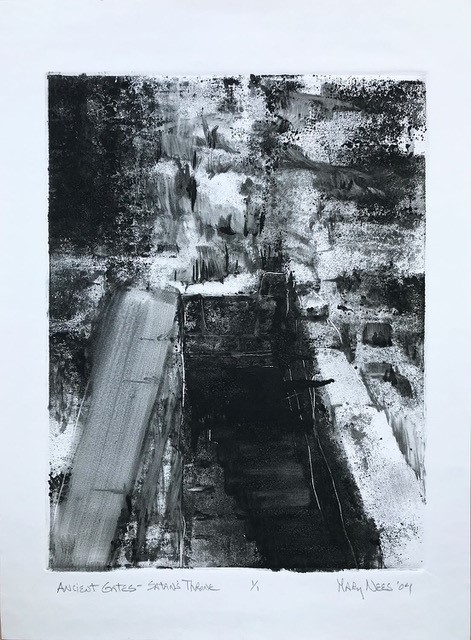I was in the Salvation Army thrift store this week fishing through stacks of old frames, ignoring the pictures. But one small piece started me thinking about why folks make representations and hang them on walls. The prompt was a rather darkish watercolor of a flower stalk. It wasn’t badly done, the artist set it up on paper, selected a muted palette, articulated petals, signed it carefully, then framed it for some wall. I imagine she was proud of it, wanted it seen. Now, I reckon that the real flower stalk was more stunning however short-lived. The panting remains. It’s a token or a signifier of something. What motivated the artist to capture this stalk on a piece of paper? What gave her the impulse to copy what was before her? Was it some kind of sentiment? Or was it something else that would move her to set up and spend time? Is she still alive? Would the painting have prompted a rich memory of a moment? Or was her composition just a thing, a stand alone, made for adornment without any reference?
I muse on this because I wonder about the drive to “capture it” when I am working and when I am thinking about what it is I want to work. It is not representation that moves me. The references, the things I see with my eyes, hear with my ears and am moved by are only jumping off points. To render anything precisely for me misses the point of why I want to fill a frame. To perfectly imitate something on a board presents only a false stand in. It’s a pacifier. For the real material thing I first experienced is way more lovely than the best of copies. There is rather for me something in a glimpse or a suggestion which better captures the mindful “it” so many beautiful moments only allude to.
In C.S. Lewis’ lectures series The Weight of Glory, he uses words to try to explain: “Pictures are part of the visible world… and represent it only by being part of it. Their visibility has the same source. The suns and lamps in pictures seem to shine only because real suns or lamps shine on them; that is, they seem to shine a great deal because they really shine a little in reflecting their archtypes…it is a sign (these representations) and also more than signs for the thing signified is really in a certain mode present”.
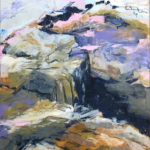
The “it” I aim for, what I hope is rendered as “present” here, is the cut-away revealing of something solid. It’s getting the chance with some material stuff to see the gem like exposure planes, the multi facets in common things of earth. This rock wall used to be covered with dirt, but now we can see what is underneath, strong and exposed. It’s also the contrast between illumination and cavernous shadow. It’s in contrast and color planes where forms are distinguished and understood. And for me the “it” is the suggestion of a different dimension that cannot be precisely laid forth on any 2 or 3 dimensional material aspect. Case in point: Jesus prompted his closest followers privately that what they were seeing right in front of them was more than what prior prophets and Kings wished to see.
In other words, even the seeing cannot grasp full import. We need time and thought. The gestures therefore leave you looking, studying, connecting dots, and I hope desiring to apprehend more of what all these beauties are pointing toward.

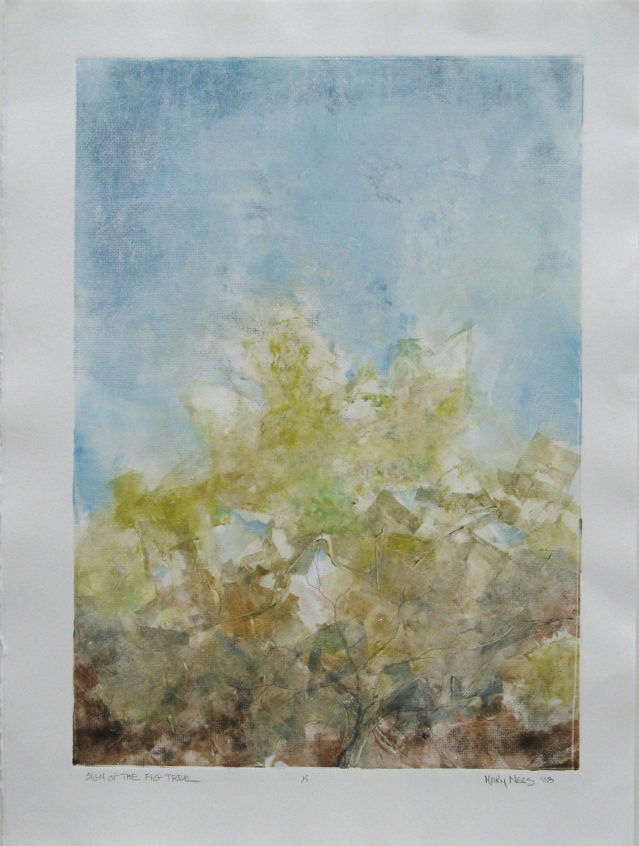

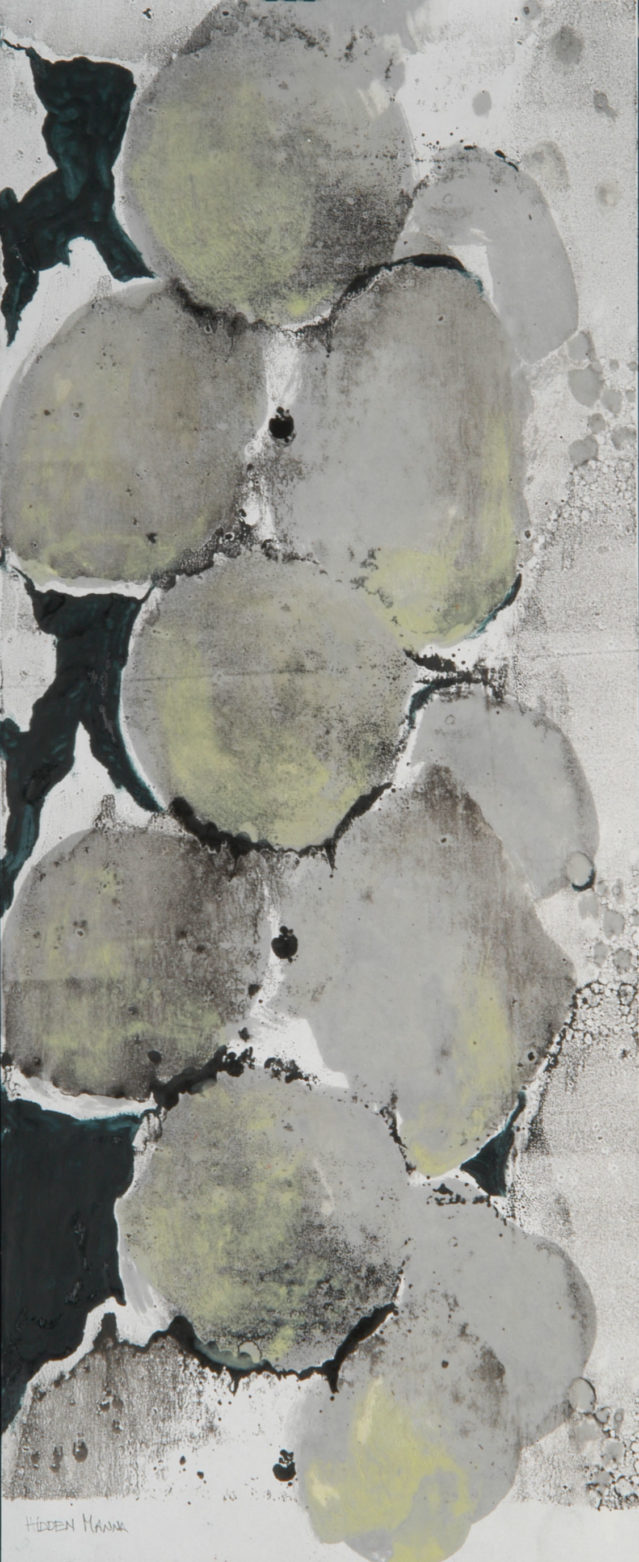

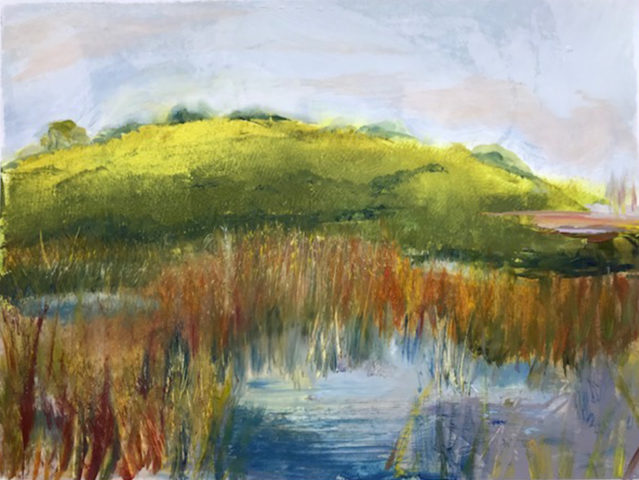
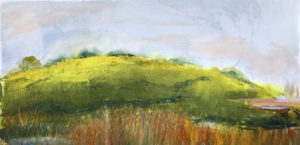
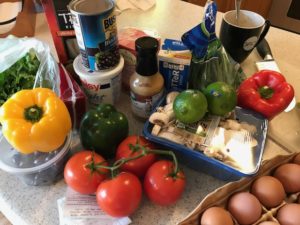 I slammed my computer closed this morning. The click-bait headlines have me so wearied, sickened. You can point fingers, but we’re all in this thing together. So, I did the next thing in my little life. I went to the grocery store. I had to do this anyway today, but I got there early and started to relish the simple tasks of handling and selecting real live things that will make a difference in our well being this week. I got to choose. I chose to enjoy the steps, the colors, the kindness of the produce man. I don’t think I have ever enjoyed a grocery trip more! I came home with several bags of supplies, and arranged some on my counter like a Dutch still life. Art is not imitating life here. Real life was already happening. You could rather say Life is imitating art of a sort. This is some of the gleanings I’ll use up this week.
I slammed my computer closed this morning. The click-bait headlines have me so wearied, sickened. You can point fingers, but we’re all in this thing together. So, I did the next thing in my little life. I went to the grocery store. I had to do this anyway today, but I got there early and started to relish the simple tasks of handling and selecting real live things that will make a difference in our well being this week. I got to choose. I chose to enjoy the steps, the colors, the kindness of the produce man. I don’t think I have ever enjoyed a grocery trip more! I came home with several bags of supplies, and arranged some on my counter like a Dutch still life. Art is not imitating life here. Real life was already happening. You could rather say Life is imitating art of a sort. This is some of the gleanings I’ll use up this week.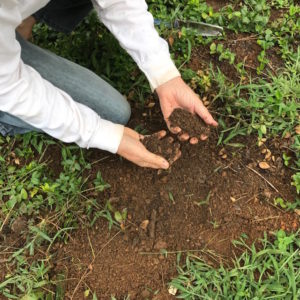 All this and more fascinates me for the Creation account in Genesis 2 has God Himself getting his hands into the dirt, in time, on the ground to make things. Then we are tasked, after His exampling, to make things. It’s in the making that seeing is enhanced. It’s in the time taken and slowed down where relationships are better understood. It’s work, but strangely hope-filled.
All this and more fascinates me for the Creation account in Genesis 2 has God Himself getting his hands into the dirt, in time, on the ground to make things. Then we are tasked, after His exampling, to make things. It’s in the making that seeing is enhanced. It’s in the time taken and slowed down where relationships are better understood. It’s work, but strangely hope-filled.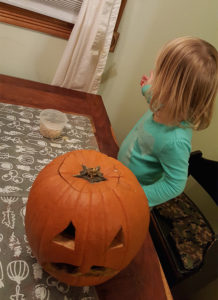 My granddaughter asked “what’s that?” as I was wiping up pumpkin mess. I looked up and saw her pointing to the wall and the round gray mimic cast by our big orange beauty. “That’s a shadow! Do you see how it moves as I slide this over? And if I turn the light off. . . it goes away! Isn’t that amazing? The light is what causes that shadow and the pumpkin is just blocking light on the wall. See, you can do the same thing with your hand: move your fingers and see how you can block the shine and change the shadow’s shape.” So, she got totally engaged with that exercise, and kept twinkling her fingers while I twinkled with thoughts.
My granddaughter asked “what’s that?” as I was wiping up pumpkin mess. I looked up and saw her pointing to the wall and the round gray mimic cast by our big orange beauty. “That’s a shadow! Do you see how it moves as I slide this over? And if I turn the light off. . . it goes away! Isn’t that amazing? The light is what causes that shadow and the pumpkin is just blocking light on the wall. See, you can do the same thing with your hand: move your fingers and see how you can block the shine and change the shadow’s shape.” So, she got totally engaged with that exercise, and kept twinkling her fingers while I twinkled with thoughts.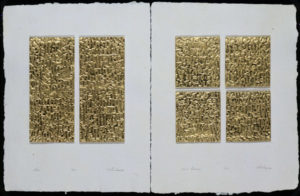
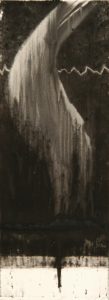 This is an older image, but a concept I’ve been revisiting in my head: the coming of whirlwind.
This is an older image, but a concept I’ve been revisiting in my head: the coming of whirlwind.